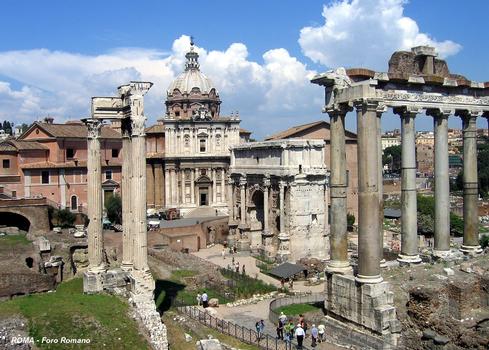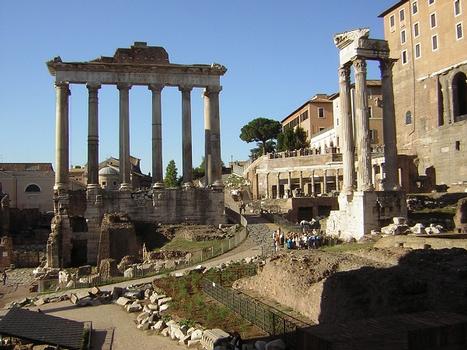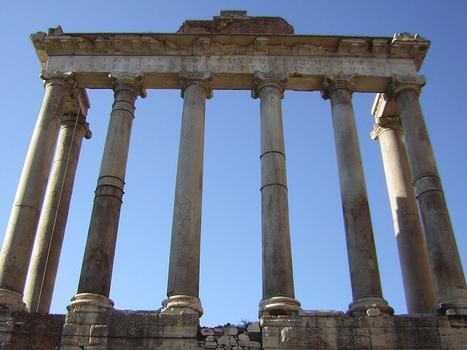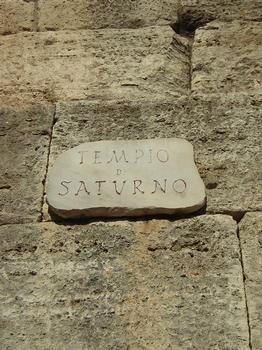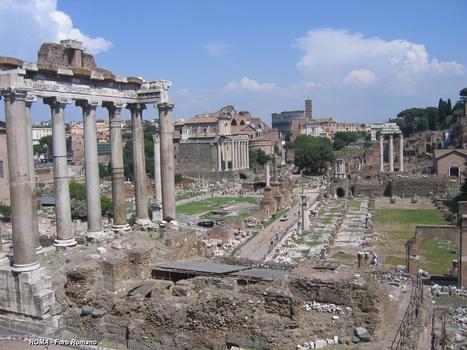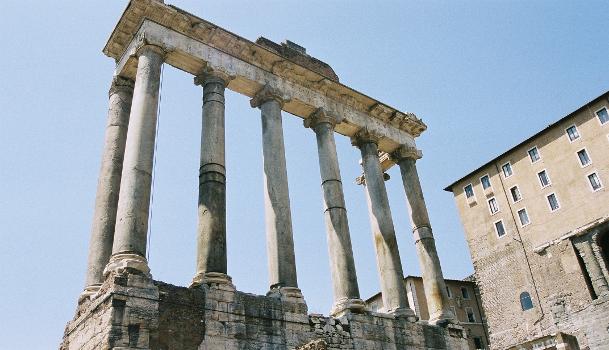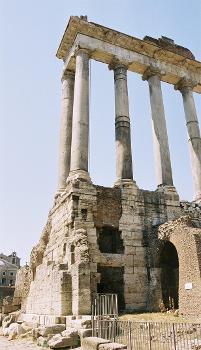General Information
| Name in local language: | Tempio di Saturno |
|---|---|
| Other name(s): | Templum Saturni |
| Completion: | 42 B.C. |
| Status: | in ruins |
Project Type
| Structure: |
Column and beam structure |
|---|---|
| Function / usage: |
Temple |
| Architectural style: |
Hellenistic |
| Material: |
Masonry structure |
Location
Technical Information
There currently is no technical data available.
Excerpt from Wikipedia
The Temple of Saturn (Latin: Templum Saturni or Aedes Saturni; Italian:Tempio di Saturno) was an ancient Roman temple to the god Saturn. Its ruins stand at the foot of the Capitoline Hill at the western end of the Roman Forum. The original dedication of the temple is traditionally dated to 497 BC, but ancient writers disagreed greatly about the history of this site.
Archaeology
Collapse has left little standing but the remains of the front porch. The partially preserved pediment displays the inscription:
Senatus Populusque Romanus incendio consumptum restituit
meaning "The Senate and People of Rome restored [the temple] consumed by fire." The pediment and eight surviving columns represent one of the iconic images of Rome's ancient architectural heritage.
History and function
Construction of the temple is thought to have begun in the later years of the Roman Kingdom under Tarquinius Superbus. Its inauguration by the consul Titus Lartius took place in the early years of the Republic. The temple was completely reconstructed by Munatius Plancus in 42 BC.
The present ruins represent the third incarnation of the Temple of Saturn, replacing the version destroyed by the fire of Carinus in 283 AD. The extant inscription on the frieze commemorates this restoration undertaken after the fire. If still in use by the 4th-century, the temple would have been closed during the persecution of pagans in the late Roman Empire.
In Roman mythology, Saturn ruled during the Golden Age, and he continued to be associated with wealth. His temple housed the treasury (aerarium), where the Roman Republic's reserves of gold and silver were stored. The state archives and the insignia and official scale for the weighing of metals were also housed there. Later, the aerarium was moved to another building, and the archives transferred to the nearby Tabularium. The temple's podium, in concrete covered with travertine, was used for posting bills.
Interior
According to ancient sources, the statue of the god in the interior was veiled and equipped with a scythe. The image was made of wood and filled with oil. The legs were covered with bands of wool which were removed only on December 17, the day of the Saturnalia.
Text imported from Wikipedia article "Temple of Saturn" and modified on July 23, 2019 according to the CC-BY-SA 4.0 International license.
Participants
Currently there is no information available about persons or companies having participated in this project.
Relevant Web Sites
- About this
data sheet - Structure-ID
20009650 - Published on:
21/07/2003 - Last updated on:
04/03/2022

